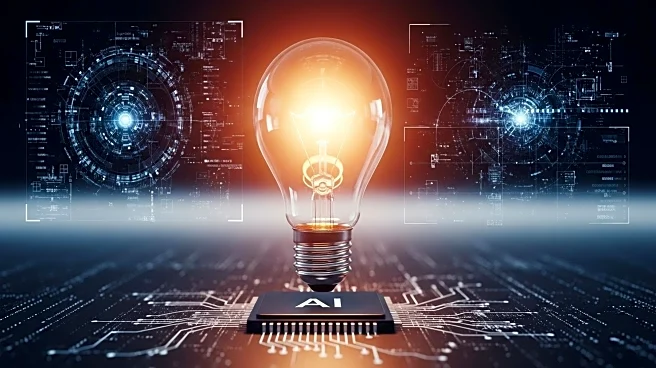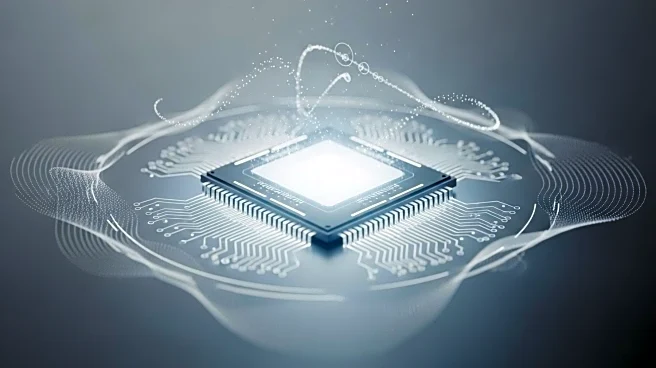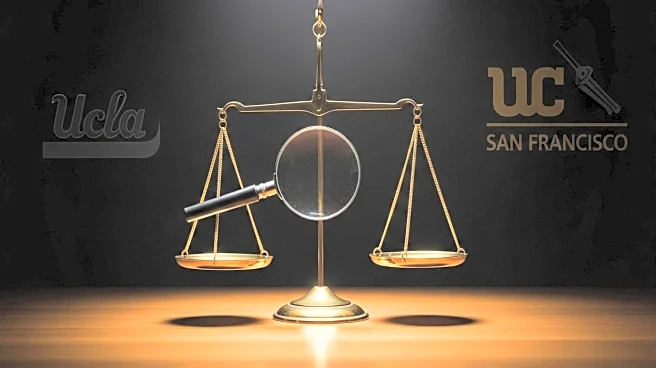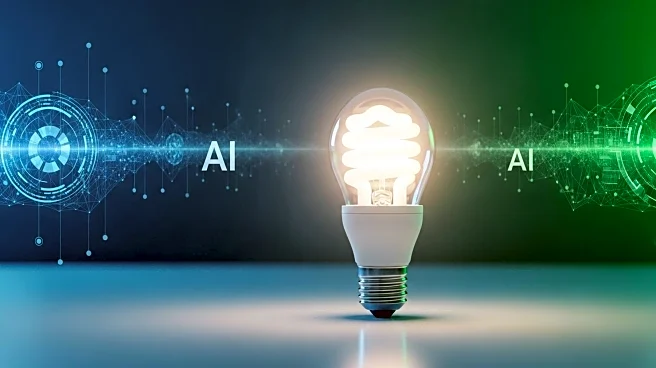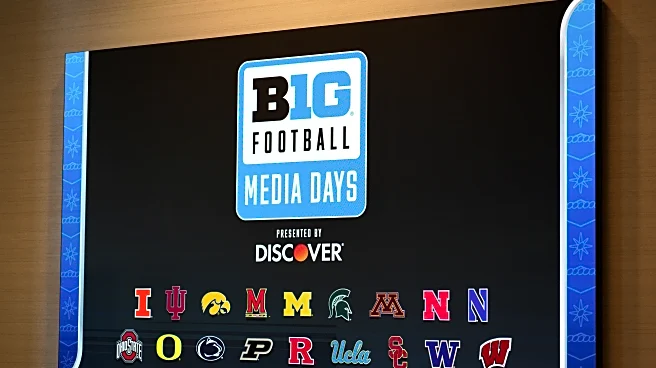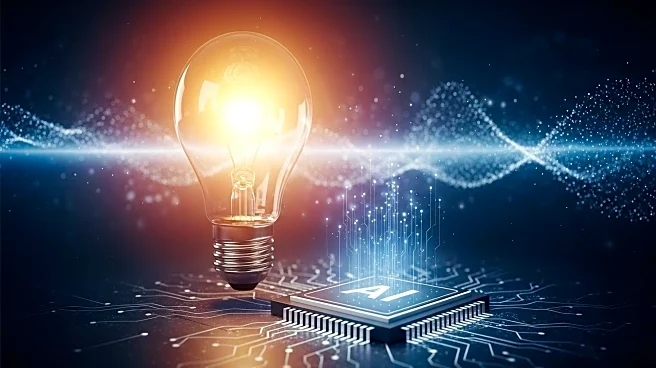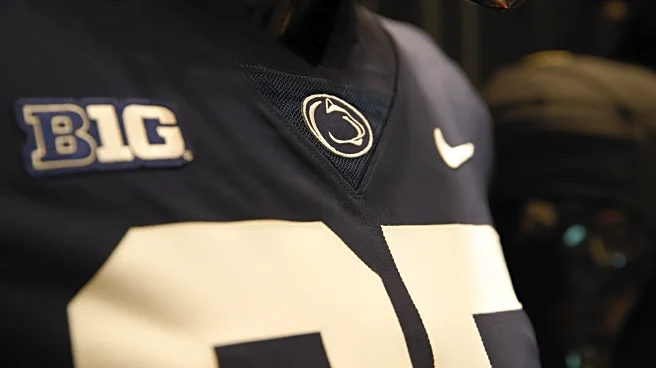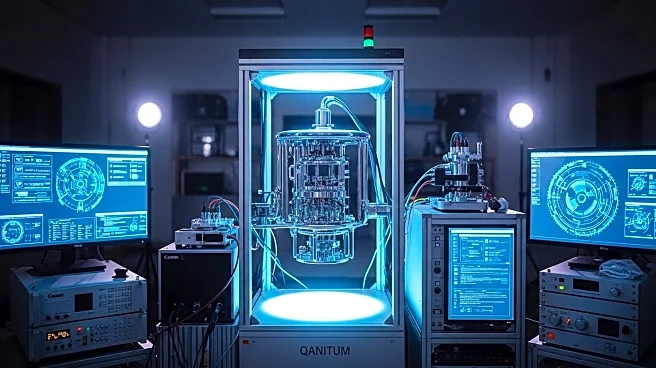What is the story about?
What's Happening?
Researchers at the University of California, Los Angeles, led by Aydogan Ozcan, have developed a new AI image generator that uses light to produce images, significantly reducing energy consumption compared to traditional methods. This system employs a digital encoder to create static images, which are then imprinted onto a laser beam using a spatial light modulator (SLM). The laser beam, when passed through a second decoding SLM, generates the desired image instantly. This method contrasts with conventional diffusion models that require extensive computational power and energy. The new system has demonstrated its capability by producing images in the style of Vincent Van Gogh, consuming only a few millijoules of energy per image.
Why It's Important?
The development of this light-based AI image generator represents a significant advancement in reducing the energy demands of AI technologies. Traditional AI image generation processes are energy-intensive, often requiring substantial computational resources and cooling systems. By drastically lowering energy consumption, this new method could lead to more sustainable AI applications, particularly in data centers and wearable electronics. The reduced energy requirements could also lower operational costs and environmental impact, making AI technologies more accessible and eco-friendly.
What's Next?
The next steps for this technology involve adapting it for use in data centers, potentially replacing current high-energy image generation tools. Additionally, its low power requirements make it suitable for integration into wearable electronics, such as AI glasses. Further research and development could expand its applications and improve its efficiency and image quality, paving the way for broader adoption in various industries.
AI Generated Content
Do you find this article useful?
